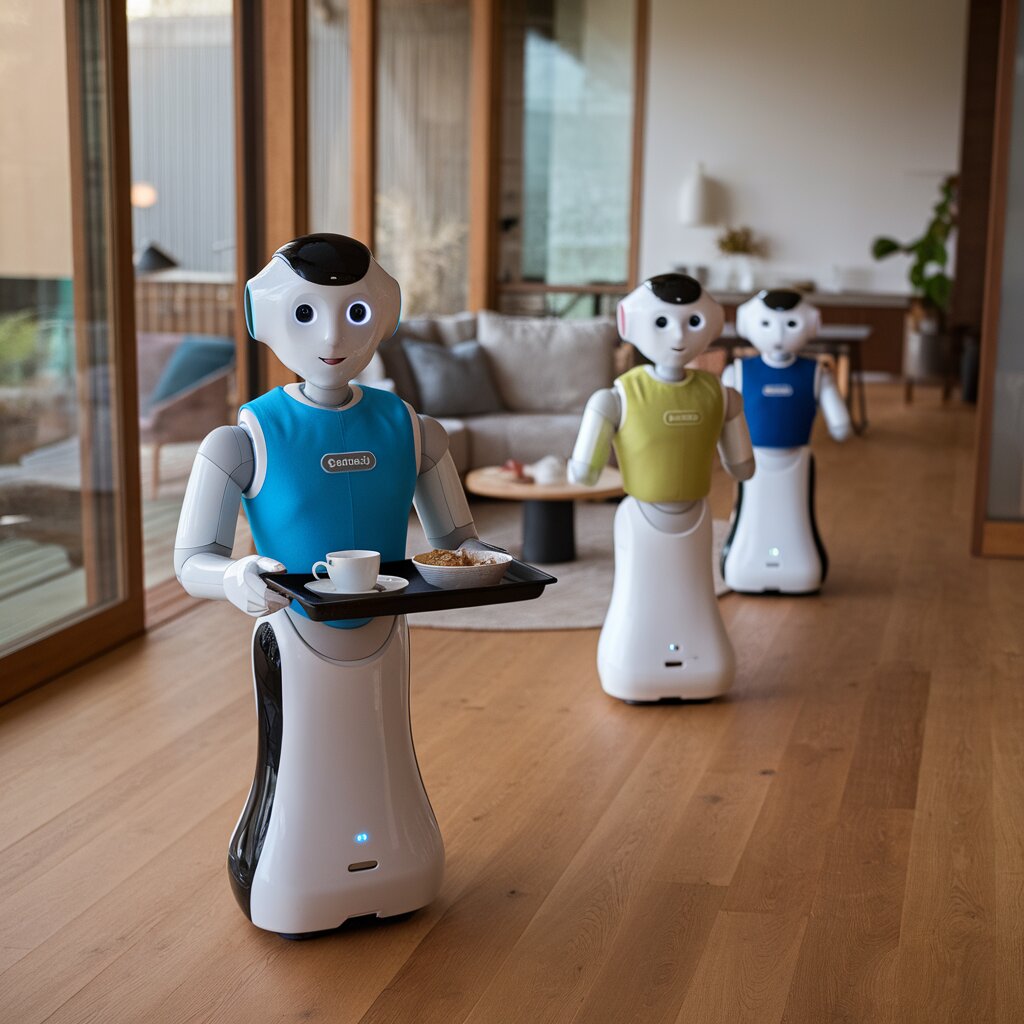The concept of home robots has been a tantalizing idea since “The Jetsons” first aired on September 23, 1962. The debut episode introduced Rosey the Robot, a household assistant tasked with various chores. Despite more than sixty years since her introduction, Rosey remains a symbol of the unfulfilled potential of home robots.
As we fast forward to 2024, the landscape is not entirely devoid of robotic helpers. Companies like iRobot have sold more than 50 million Roombas, which only represent a fraction of the global market for robotic vacuums. Alongside these, robot lawnmowers and pool cleaners have also found their niche, albeit not nearly as successfully.
The issue isn’t a lack of consumer interest or manufacturing effort. The crux of the problem lies in the trifecta of pricing, functionality, and efficacy. Outside of specialized roles like vacuuming, most home robots today either don’t perform enough tasks or fail to do them well enough to justify their existence. The cost to create a multitasking robot that can excel in various chores would be prohibitive for most consumers.
Vacuums as the Pinnacle of Home Robotics
Colin Angle, the co-founder and former CEO of iRobot, often quipped that his success as a roboticist began when he turned into a vacuum salesman. This amusing anecdote underscores a broader truth about the industry. Before the Roomba rolled out, iRobot was experimenting with diverse, albeit less successful, ventures—from military equipment to toys.
Their breakthrough came when they zeroed in on a single, straightforward task: floor cleaning. Despite their early models being rudimentary by today’s standards, they proved sufficient for their price point. It’s noteworthy that the Roomba will soon celebrate its 22nd anniversary, marking its long-standing influence in the sector.
Throughout the years, iRobot has invested significantly in research and development, enhancing their vacuums with advanced features like sensing, mapping, and AI capabilities. Despite ventures into other categories, such as gutter clearing and pool cleaning, none have replicated the Roomba’s success.
Balancing Ambition and Reality
Years ago, during a robotics panel discussion, a woman in the audience proposed an idea for a multifunctional cleaning drone. While the concept was intriguing, it mirrored the practical challenges that have plagued the industry. It’s not that the idea is novel, but scalability and cost-efficiency pose insurmountable hurdles.
This dichotomy between ambition and feasibility came sharply into focus with Tesla’s flamboyant yet dubious humanoid robot announcement. Even though Elon Musk’s promises were grand, skepticism remains warranted given his track record with timelines.
Before we see fully functioning, versatile robots like Rosey, simpler machines must lay the groundwork. Manufacturing robots have excelled at repetitive tasks for decades, but applying this principle to the more complicated environments of homes remains elusive. The complexity and cost of a multifunctional home robot would multiply the potential points of failure astronomically.
Experts believe that early home robots will focus on limited, specific tasks—perhaps as social companions, caregivers, or housekeeping aids. For the foreseeable future, these robots will be designed with one or two primary functions in mind.
Pioneering the Path Forward
While the present reality of home robotics may feel disappointing compared to our expectations, significant foundational work has been achieved. Future innovators in this space will build on a rich history of research and prior iterations of home robots. The complexities of navigating and performing tasks in the dynamic environment of a home have been gradually unraveled since the first Roomba’s introduction.
Current advancements continue to push the envelope. Take Hello Robot, for instance—a device that appears simplistic with its arm-on-a-pole design but is more developmental platform than consumer product. Such innovations pave the way for future, more sophisticated systems.
The Challenge of Social Robots
Recent years have not been kind to social home robots. Companies like Anki, Kuri, and Jibo have faltered, falling victim to a mix of high prices, limited functionality, and reliability issues. Amazon’s Astro also struggled despite initial hype, partially due to the company’s subsequent budget cuts.
The lukewarm reception to Apple’s Vision Pro similarly raises questions about the viability of its rumored foray into home robotics. Reports suggest Apple’s initial product might resemble a more sophisticated Echo Show 10, featuring an iPad-like tablet on an arm. While these early-stage projects can evolve in numerous directions, such an approach could align more realistically with consumer expectations.
Conclusion: The Road Ahead
The journey to fully functional home robots resembling Rosey still has a long way to go. Although current products have laid essential groundwork, the next wave of home robots will need to make leaps in affordability, reliability, and versatility to capture the consumer market. As we edge closer to the futuristic visions promised by shows like “The Jetsons,” there’s still ample time to refine these technologies and bring these sci-fi fantasies closer to reality.


